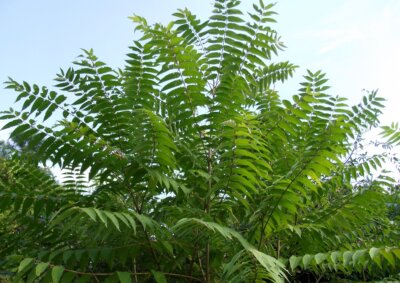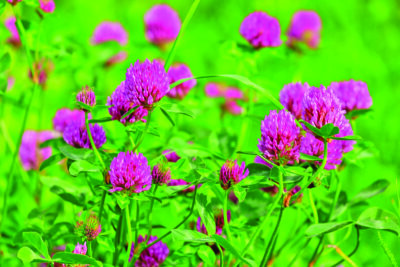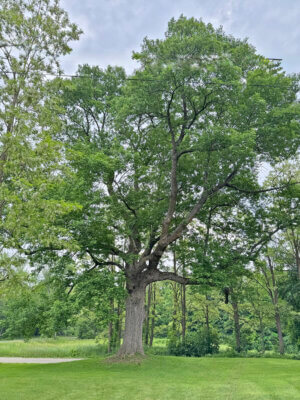Springtime ephemerals in our New England forests
As we continue to practice social distancing to avoid the coronavirus, I think daily how grateful I am to be living in Vermont, and in Charlotte in particular, where most of us can walk out our doors for fresh air and a closer look at the natural world around us. We’re not confined as are most city people, and there are blossoming trees, colorful birds and currently daffodils right outside our doors. As the weather warms, we can drive along country roads or amble in the countryside to witness nature awakening and revel in the springtime miracle of returning birds, the greening of lawns, meadows and forest floors.
The trees are just beginning to open their leaves, so on sunny days abundant light reaches and warms the forest floor. The tiny plants under the trees have burst forth to take advantage of this brief period of light and warmth; they unfurl their leaves, and the flowers extend upward in brilliant colors. Great swaths of the forest floor turn green with a yellow or white glow for a while before the flowers wilt and, if fertilized, seeds develop, all before the leafy canopy closes in overhead. These plants that sprout, flower, and fruit so quickly before wilting and disappearing are called ephemerals, for their brief appearances on the forest floor.
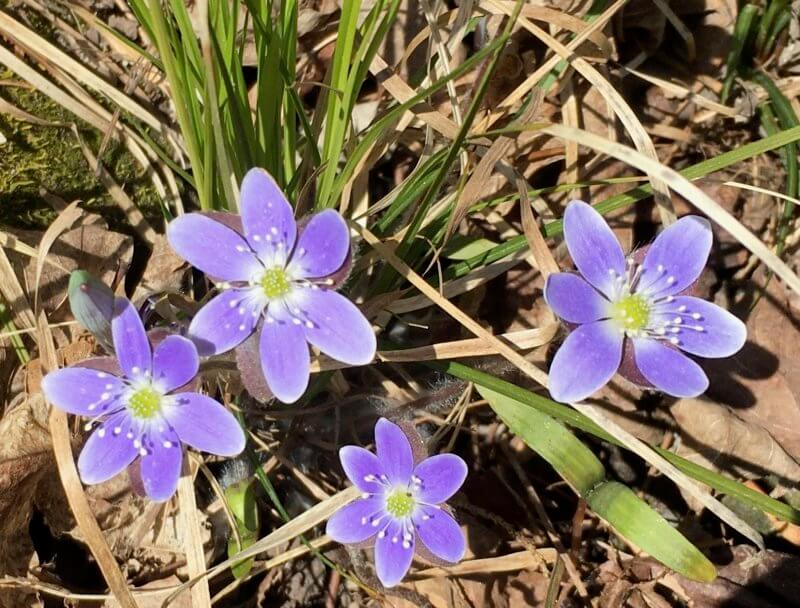
We have all seen and admired these little beauties. One of the earliest is the hepatica, only 4–6 inches tall, with a delicate white, pink or periwinkle, daisy-like blossom. Its leaves are rounded with three deep lobes, similar to the shape of a liver, which is how it got its name. While there is a good population of hepaticas on Thompson’s Point, most of the time they occur in very small clusters, even as few as just one or two plants.
By contrast, the trout lily (Erythronium americanum), which started blooming here in late April, is a much more abundant plant. If you see one plant, you may find a hundred or a thousand of them, and they are blooming now. It has very simple, mottled leaves, 5–8 inches long that you’ve probably seen along roads or in the forest, even creeping into your yard. It is a lily, so has three petals and three sepals, all yellow in a typical lily-like, bell-like shape that droops slightly. Inside are six stamens surrounding one green pistil, the male and female parts respectively.
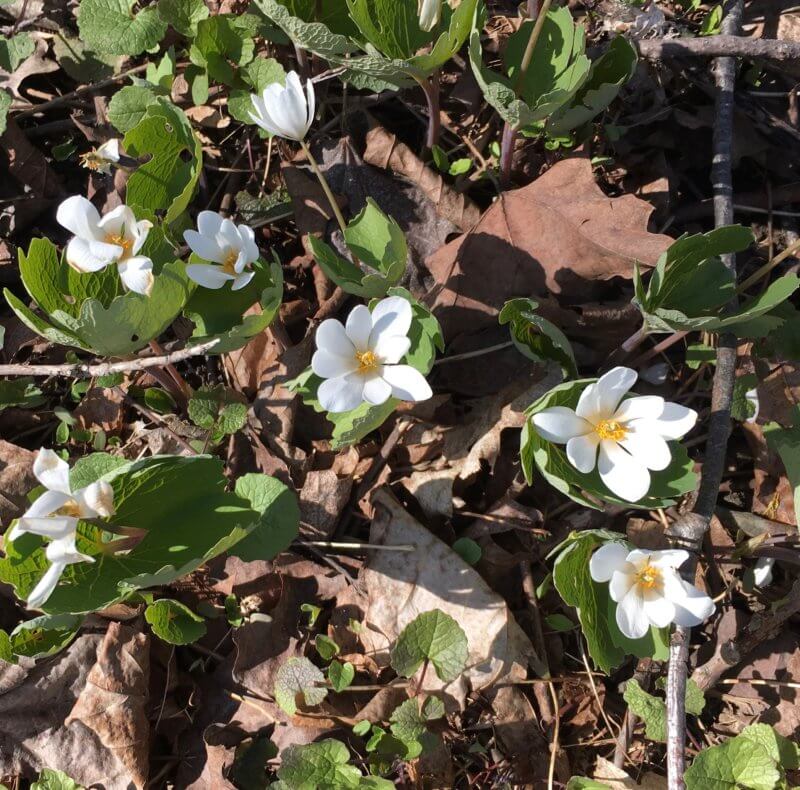
Another lovely flower that has just finished blooming is the bloodroot. It has a delicate white flower with a daisy-like radial design, with 8–10 petals surrounding the yellow center. Like the trout lily, it is only about 5–8 inches tall, but after it blossoms and wilts, the leaves get bigger and taller, extending at least twice the height of the original flower. The leaves are very distinct; they are round with indentations and great lobes, making it look very decorative. (See photo.)
Most people are familiar with the white trillium (Trillium grandiflorum) also in the lily family, which is now flourishing in our woods. There are great swaths of trilliums on the forest floor on some areas of Thompson’s Point and other areas around town. Look for them on the eastern side of Greenbush Road south of Thompson’s Point Road and along the town trail on the Burns property south of the West Charlotte town center. The flowers are 2 to 4 inches in diameter, with three showy white petals above three smooth, pointed leaves, about 10–15 inches tall. They are striking, especially when found in large groups.
There are also two other trilliums found in Vermont—the red trillium, often called a wake robin, and the painted trillium, which is also white with a red streak extending down the middle of each petal. The white is by far the most common and abundant and is the first of the trilliums to appear.
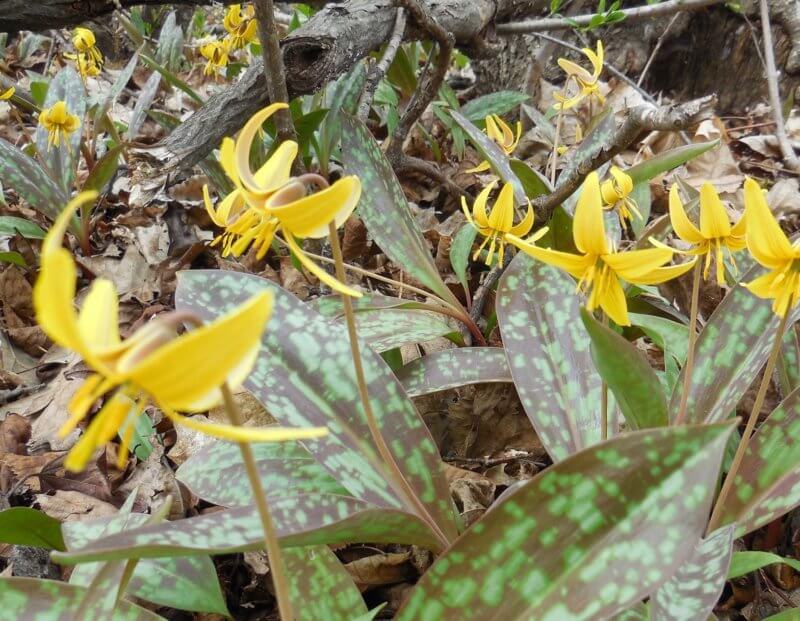
In late May and early June, another lily will appear: the blue bead lily (Clintonia borealis). This plant has two larger, fleshy leaves, 8-10 inches long, with a single stem, coming up between the two leaves with 3–6 yellow-green flowers, about an inch long. These flowers also show the typical lily structure with three petals and three sepals, all the same color.
As the spring progresses, other flowers will emerge: many species of violets and clovers, Jack-in-the Pulpits, and columbine, to name a few.
For more information, google “spring ephemerals” or “native spring wildflowers. Most importantly, get outside and enjoy this wonderful time of year before the tree leaves develop and shade the ground underneath them.
Mary Van Vleck is a member of the Charlotte Conservation Commission. The commission currently meets by Zoom the fourth Tuesday of the month at 7 p.m. All are welcome.
Related Stories
Popular Stories
If you enjoy The Charlotte News, please consider making a donation. Your gift will help us produce more stories like this. The majority of our budget comes from charitable contributions. Your gift helps sustain The Charlotte News, keeping it a free service for everyone in town. Thank you.
Andrew Zehner, Board Chair




